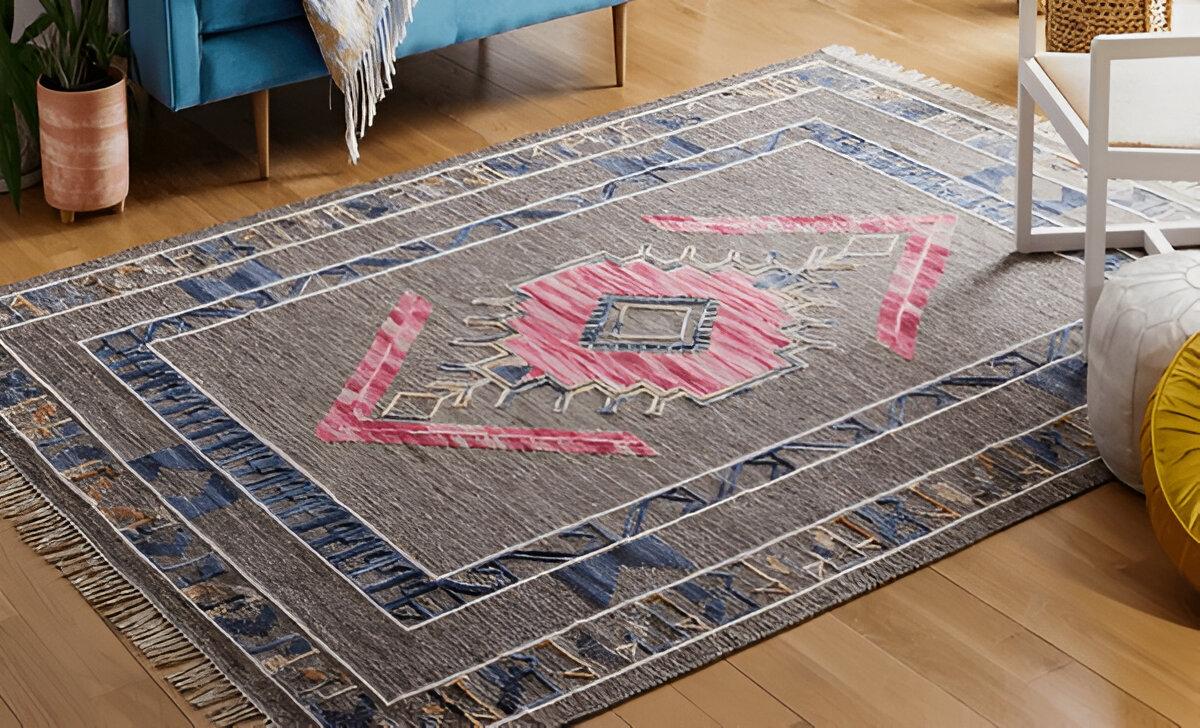Traditional Rug UK: A Comprehensive Definitive Guide

Traditional rugs trace their roots to ancient weaving cultures across Central Asia, Persia, and Anatolia.
British traders first brought these intricate floor coverings to Europe during the seventeenth century.
They quickly became status symbols in grand country houses and stately period homes.
Significance in British Interiors
Royal residences and aristocratic estates favoured Persian and Oriental rugs for opulence.
Today, traditional rugs add historic charm and timeless elegance to modern UK homes.
They serve as focal art pieces while providing warmth and acoustic benefits underfoot.
Materials and Craftsmanship
Wool and Natural Fibres
Wool remains the most popular fibre for traditional UK rugs due to its durability and softness.
Natural fibres like silk, cotton, and bamboo silk appear in finer handmade pieces.
Each material offers unique texture, sheen, and resilience suited to various room conditions.
Weaving Techniques
Hand-knotted weaving produces high-quality rugs with long-lasting pile and clear pattern definition.
Flatweave techniques like Kilim employ interlaced warp and weft threads for reversible designs.
Hand-tufting uses a tufting gun to insert yarn loops into a canvas backing before finishing.
Styles and Motifs
Persian and Oriental Patterns
Classic Persian designs feature central medallions, floral arabesques, and intricate borders.
Oriental motifs borrow geometric elements, tribal symbols, and bold colour palettes.
Faded antique reproductions create a vintage patina ideal for period-style interiors.
European Aubusson and Savonnerie
French Aubusson rugs display delicate floral bouquets and rococo-inspired scrollwork.
Savonnerie carpets boast densely knotted piles and regal motifs originally crafted for palaces.
These continental styles suit formal living rooms, dining areas, and grand entrance halls.
Sizing and Placement
Measuring Your Space
Measure room length and width accurately before selecting a traditional rug size.
Account for furniture positioning to ensure the rug anchors seating or dining areas effectively.
Allow at least twenty to forty centimetres of exposed floor around the rug’s perimeter for balance.
Placement Best Practices
Centre rugs under coffee tables to anchor living room furniture cohesively.
Use larger rugs beneath dining tables to accommodate chairs when people pull them out.
Hallway runners protect wooden floors while guiding foot traffic through narrow corridors.
Colour and Pattern Coordination
Complementary Colour Schemes
Select rug hues that harmonise with existing wall paint, curtains, and upholstery tones.
Neutral base colours like ivory, beige, and grey allow ornate patterns to stand out elegantly.
Bolder reds, blues, and greens work well in period rooms with rich wooden panelling.
Mixing with Modern Décor
Pair traditional rugs with contemporary furniture to create eclectic, layered spaces.
Use simple, streamlined sofas and chairs to balance intricate rug patterns visually.
Accent with metallic or glass accessories to introduce lightness beside heavy wool textures.
Maintenance and Care
Routine Cleaning Practices
Vacuum regularly using a low-suction setting to preserve individual pile fibres.
Rotate rugs every three to six months to promote even wear and prevent sun fading.
Address spills swiftly by blotting with a clean, absorbent cloth—avoid rubbing vigorously.
Deep Cleaning and Professional Services
Schedule professional deep cleans every one to three years depending on foot traffic levels.
Dry cleaning and gentle shampoo methods suit wool rugs, while delicate fibres require specialist care.
Allow rugs to dry flat and out of direct sunlight to maintain shape and colour integrity.
Ethical and Sustainable Options
Fair Trade Certifications
Seek rugs bearing Fair Trade or GoodWeave certifications to ensure ethical production standards.
These labels guarantee weavers receive fair wages, safe working conditions, and no child labour.
Supporting certified collections helps preserve traditional craftsmanship and artisan communities.
Eco-Friendly Materials
Recycled wool and organic cotton rugs reduce environmental impact without sacrificing quality.
Natural plant-based dyes minimise chemical usage and offer subtle, lasting hues.
Look for GOTS (Global Organic Textile Standard) certification to verify sustainable processing.
Buying Tips and Budget Considerations
Budget Versus Longevity
Investing in high-quality hand-knotted wool rugs yields superior longevity and visual appeal.
Machine-made reproductions offer more affordable alternatives for occasional or decorative use.
Weigh initial cost against expected lifespan and maintenance requirements for best value.
Trusted Suppliers and Authentication
Purchase from reputable UK rug dealers or specialist antique rug houses with transparent provenance.
Ask for documentation on origin, age, and dye sources to confirm authenticity of antique pieces.
Inspect knot density (knots per square inch) as a quality indicator: higher densities reflect finer detail.
- Art
- Causes
- Crafts
- Dance
- Drinks
- Film
- Fitness
- Food
- Spiele
- Gardening
- Health
- Home
- Literature
- Music
- Networking
- Other
- Party
- Religion
- Shopping
- Sports
- Theater
- Wellness
- Script
- App
